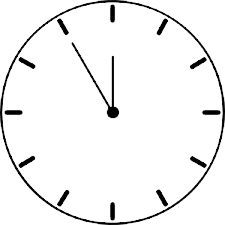Timer Resolution Measured in digital systems ensures precise timing for various operations. Understanding how timer resolution is measured is essential for software development, hardware synchronization, or system performance optimization. This article aims to comprehensively explore timer resolution measurement techniques, shedding light on their significance and implications.
Table of Contents
What is Timer Resolution?
Timer resolution refers to the smallest unit of time that a system’s timer can measure or track accurately. It dictates the precision with which time intervals can be calculated or events can be timed within a digital system. A higher timer resolution allows for finer granularity in time measurement, enabling more accurate synchronization and timing operations.
Importance of Timer Resolution
Timer resolution is crucial in various domains, including software development, real-time systems, multimedia applications, gaming, and scientific computing. In these fields, precise timing is often required for animation rendering, audio/video processing, sensor data collection, and system event handling. Insufficient timer resolution can lead to inaccuracies, timing errors, and degraded performance in such applications.
How is Timer Resolution Measured?
Timer resolution is typically measured in units of time, such as milliseconds (ms), microseconds (µs), or nanoseconds (ns), depending on the capabilities of the underlying hardware and software. Several methods are commonly used to measure timer resolution:
System Calls: Operating systems often provide system calls or APIs (Application Programming Interfaces) for querying timer resolution. These system calls return the most minor measurable time interval supported by the system’s timer.
Hardware Timers: Some hardware platforms feature dedicated timers or clock sources with configurable resolution settings. Timer resolution can be measured by programming these hardware timers to generate interrupts or signals at precise intervals and then measuring the elapsed time between consecutive events.
Benchmarking Tools: Various benchmarking and profiling tools are available to measure timer resolution and analyze system performance. These tools often include built-in functionalities for assessing timer accuracy and resolution across different hardware and software configurations.
Software Libraries: Certain programming languages and libraries provide functions or utilities for programmatically querying timer resolution. Developers can utilize these tools to obtain information about the timer resolution supported by the underlying runtime environment.
Factors Affecting Timer Resolution
Several factors influence the timer resolution that a system can achieve:
Hardware Capabilities: The hardware architecture of the system, including the processor, chipset, and associated peripherals, determines the available timer resolution. Modern hardware platforms often feature high-resolution timers with support for nanosecond-level precision.
Operating System Support: The operating system significantly manages timers and provides access to timer resolution information. OS-level optimizations and kernel configurations can impact the granularity of time measurement.
Software Implementation: How software applications interact with timers and handle timing-related operations can affect timer resolution. Efficient software design and implementation practices can maximize timer accuracy and precision.
System Load and Interference: System load, background tasks, and external interference can introduce jitter and variability in timer resolution. Minimizing system overhead and optimizing resource utilization are essential for consistent timing performance.
Challenges and Considerations
While measuring timer resolution provides valuable insights into system timing capabilities, several challenges and considerations should be taken into account:
Accuracy vs. Precision: Timer resolution alone does not guarantee accuracy. Factors such as clock drift, synchronization errors, and system latency can affect timing accuracy in practical scenarios.
Platform Portability: Timer resolution may vary across hardware platforms and operating systems. Developers should consider platform-specific differences when designing cross-platform applications.
Real-Time Requirements: Applications with real-time constraints often require deterministic timing behavior and guaranteed response times. Predictably, timing in such applications requires careful consideration of timer resolution and system latency.
Performance Overhead: Querying timer resolution and performing timing measurements may incur overhead, especially in high-frequency or time-critical scenarios. Developers should balance the need for precise timing with performance considerations.
Conclusion
Timer resolution measurement is essential for understanding the timing capabilities of digital systems and ensuring accurate and reliable timing in various applications. By employing appropriate measurement techniques and considering factors such as hardware capabilities, software implementation, and real-time requirements, developers can optimize timing performance and enhance their systems’ overall efficiency and effectiveness.
Mastering timer resolution measurement empowers developers to unlock the full potential of their digital systems and deliver exceptional user experiences across a wide range of applications and use cases.
